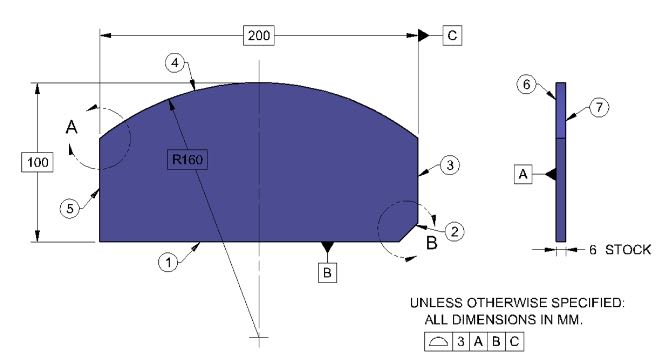Kedu
Mechanical
- May 9, 2017
- 193
What is your opinion about this drawing?
Are datum feature B and datum feature C fully defined or are incomplete? Otherwise stated, is profile general note (profile|3|A|B|C|) applicable to "B" and "C" datum features?

Are datum feature B and datum feature C fully defined or are incomplete? Otherwise stated, is profile general note (profile|3|A|B|C|) applicable to "B" and "C" datum features?

